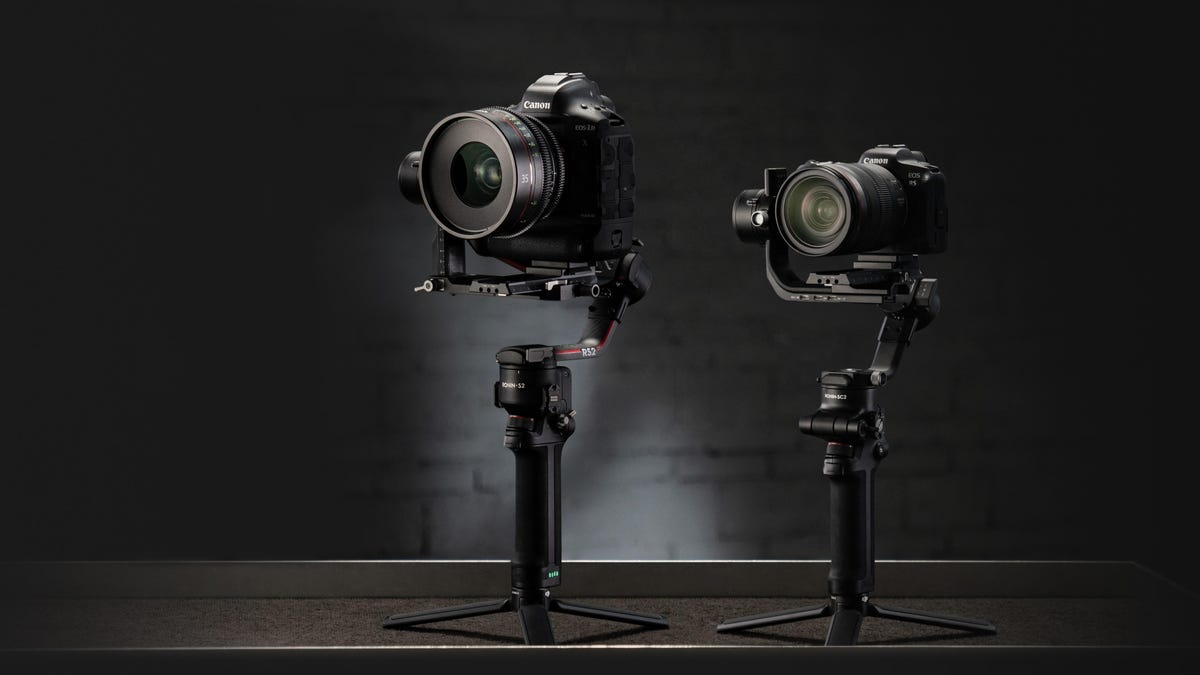 Why You Can Trust CNET
Why You Can Trust CNET DJI's Ronin returns as the RS 2, RSC 2 to stabilize cameras big and small
The full-size and compact gimbals are redesigned for more flexible use and easier storage.

DJI's new RS 2 (left) and RSC 2 camera gimbals.
As it does with its camera drones , DJI updated its Ronin-S and Ronin-SC three-axis camera gimbals based on feedback from professionals. The new models, the $849 RS 2 and $499 RSC 2, are lighter and more flexible in design while bulking up on features and without sacrificing battery life. In Australia and the UK, the prices for the RS 2 are AU$1,299 and £699, respectively, while for the RSC 2 they're AU$699 and £389.
The RS 2, made to hold a payload of 4.5 kilograms (10 pounds), weighs only 1.3kg (2.9 pounds) due in part to a switch to a structure of carbon fiber. However, it still has a battery large enough to get it through 12 hours of use, and it can now be quick-charged in 15 minutes for an additional 2 hours of use.
The stabilizer's algorithm has been optimized to actually learn how you use it and adjust the gimbal's tilt and angle accordingly. A SuperSmooth mode was also added that increases stability to accommodate longer lenses of up to 100mm.
The RSC 2 has a Briefcase mode so it can be slung forward for lower shots.
Other additions include axis locks that make it easier to balance and transport, an Arca-Swiss and Manfrotto-compatible mounting plate, a built-in 1.4-inch touchscreen for settings and camera framing, and a dial for focus adjustments.
The RSC 2 is designed for smaller mirrorless cameras but with stronger motors can handle a dynamic payload of 3kg (6.6 lbs.). This means, like the RS 2, it can support more weight but performance might take a hit. Still, that's a lot of weight for a stabilizer that weighs only 1.2kg (2.7 lbs.). The RSC 2 also has up to 12 hours of battery life and a quick-charge option as well as axis locks and dual-layer camera mounting plate found on the RS 2. Instead of touchscreen, though, the RSC 2 has a 1-inch built-in OLED display.
Both models were designed to do more with help from a growing list of accessories. Those include things like a cheese plate, a focus wheel, a dual-handle grip and DJI's RavenEye Image Transmission System for remote operation from up to 200 meters away.
Both gimbals are available today from DJI and at retail. They can be purchased alone or as part of a Pro Combo with a phone holder, focus motor, RavenEye, a carrying case and more for $999 for the RS 2 and $739 for the RSC 2.

